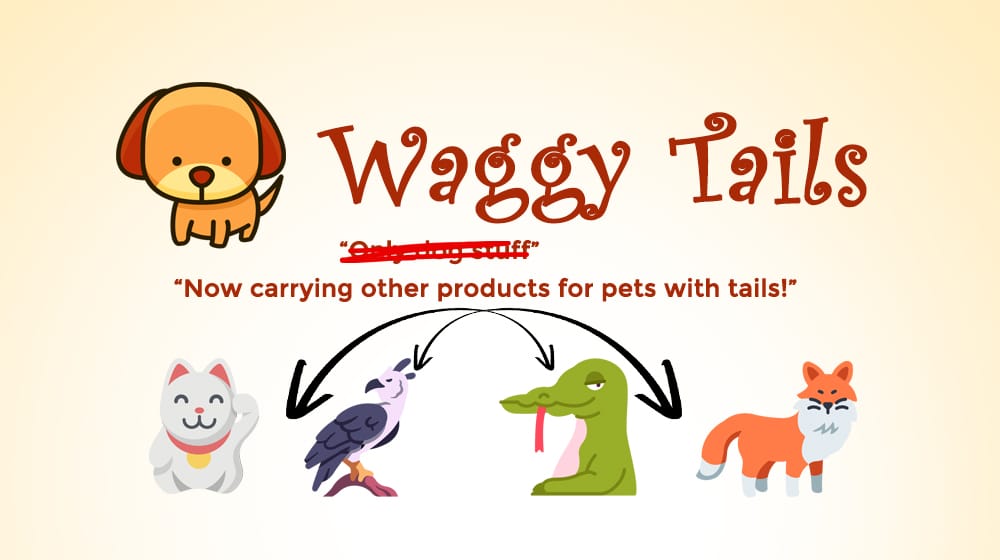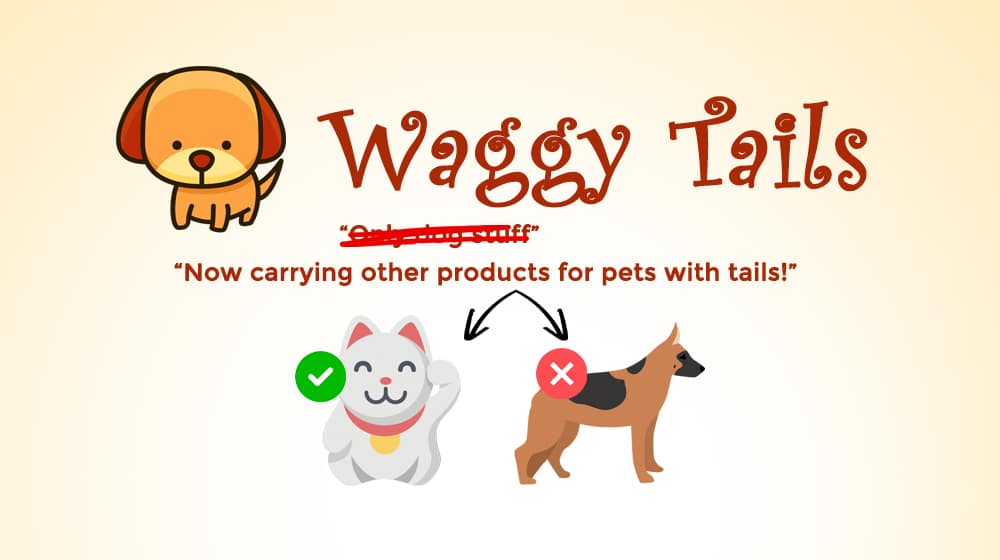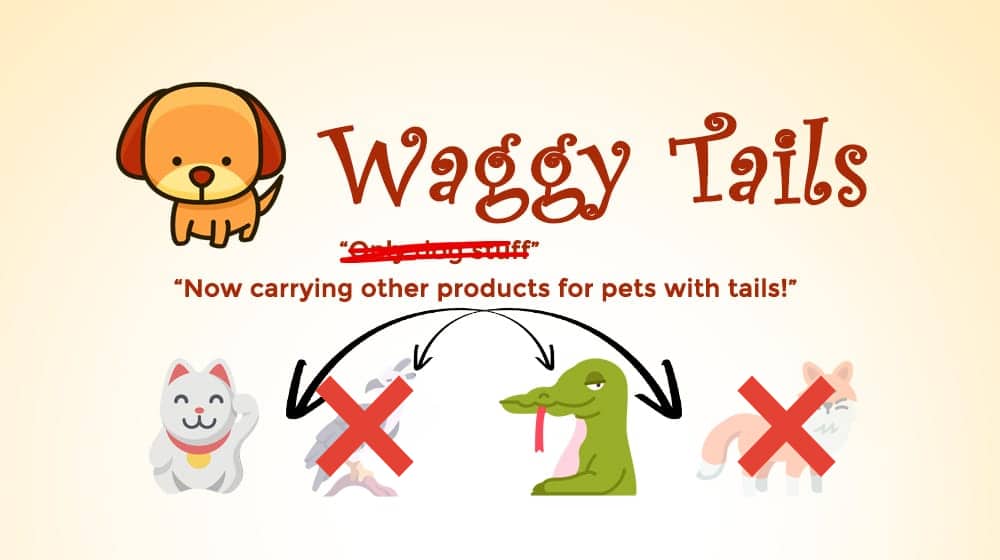FAQ: What Are Shoulder Niches and How Do They Work?

SEO and marketing are full of terms people love to create in the hopes that they can be the next person famous for coining something that catches on. Some of those terms do catch on; others fall by the wayside. Some linger indefinitely, used in niche situations but without widespread adoption.
The point is, it's unsurprising to come across a new term and have no idea what it is until you read someone's blog about it. Well, welcome to that blog! I didn't invent the phrase "shoulder niches," but I'm not going to turn down the opportunity to explain them.
What Are Shoulder Niches?
You know, kind of like how your shoulders are adjacent to and related to your head but aren't just duplicate heads.
Shoulder niches are closely related to T-shaped marketing (great, another buzzword). In T-shaped marketing, you have various topics across various industries, all with new content (the cross-bar of the T), and when one catches on, you dive deep into it.
Shoulder niches are niches across that cross-bar.
It's easier to understand if you look at an example, though. Say, for instance, that you run a site called Waggy-Tails.com, dedicated to all things dog-related. It's a focused site based around one niche, that being dogs. It has dog health tips, dog grooming tips, information about dog vaccinations, dog toys, dog food, and everything about dogs.

Shoulder niches would be Cats, Birds, Lizards, or Foxes. You know, other topics under the general umbrella of pets but which aren't necessarily part of your core (head) niche. So, if you started to write a bunch of versions of all of your relevant content, except focused on cats, you can expand the size of your market, gather more traffic, build up more products in your store, and generally expand your business.

Here are a few other examples:
- A pest control company could expand into gardening content creation through common garden pests.
- A tire company can expand into other forms of automotive parts and accessories.
- A baking blog can expand into general food or specific kinds of cuisine.
The options are as endless as the number of topics available, which is to say, literally anything in history and culture.
What Can Shoulder Niches Do for You?
Shoulder niches can be a powerful strategy for expanding your site.
Consider this: you start by creating a simple online bookstore. The store begins selling popular books but expands into selling all kinds of books, from cookbooks to magazines to textbooks, and you end up with a significant revenue stream. But, unfortunately, you've tapped out the book market. You can't find more books to sell, and you can't sell more books because you've already saturated the demand.
So, you expand into other kinds of media. You start selling DVDs and CDs. Over time, you tap that out and start selling general electronics. So on, and so on, and so on.
Sound familiar? It's what Amazon did, more or less.

Shoulder niches are a way to expand your audience and product line into something related to what you already sell but not overlapping. You leverage your authority in your core site to expand that authority into a new niche.
In our hypothetical pet example, dog owners everywhere trust you because of your accurate information and high-quality products. So, when you expand into cats, a few things happen.
- Any dog owner who also owns cats automatically trusts you with recommendations for their cats.
- New cat-focused potential customers can see that you have a hugely positive reputation from your dog content and will inherently trust you.
- You can dramatically expand your content marketing, product lines, recommendations, and everything else, to capitalize on this new niche immediately.
A good shoulder niche has a small amount of overlap with your existing head niche and is on roughly the same level.
What do I mean?
What Isn't a Shoulder Niche?
Many things are shoulder niches, and many more things are not.

A shoulder niche has to be on the same topic "tier" as your head niche. For example:
- All Animals is a poor shoulder niche for a Dog site because it's a higher tier and encompasses far too much. It's not a niche; it's an industry or even an entire category.
- Cats are a good shoulder niche for Dogs because they're both top-level categories of common household pets.
- German Shepherds are not a good shoulder niche for Dogs because it's already a sub-category of dogs.
These examples are highly contextual. If your pet-focused site is entirely focused on German Shepherds, expanding into Greyhounds could be a shoulder niche, which helps you build into a general Dog site, which can let you leverage Cats as a shoulder niche and expand into an available pet site.
Shoulder niches exist to help you climb up the tiers of content, building authority and new audience along the way.
How Can You Get Started with Shoulder Niches?
Getting started with shoulder niches is easy: pick an adjacent niche and write content. To start, you want that content to be broadly applicable and at least somewhat of interest to your existing customers. It's a big sign saying, "hey, we're trying something new."

1. Depending on the kind of person you are, you can use the slow and careful technique or the approach of reckless abandon.
The slow and careful approach involves doing plenty of research. You check with your audience to see what topics they might be interested in. You research possible niches and look for options that have coverage gaps in your site tier. It's all about the groundwork. You want each niche you step into to be one you can invest in and eventually dominate.
This method? Sure, it works, but it's a lot of time invested, and it takes a long time to see results.
2. The approach of reckless abandon is the shotgun approach. When you branch out into a shoulder niche, you pick a few niches, maybe a dozen. Then you write 3-5 pieces of content for each since a single piece doesn't necessarily give you a representative idea of how well you'll perform in that niche.
Then, you publish all of that content, and you wait and watch. And, like fishing, you see who bites, haul on the line, and see what kinds of fish you pull up. If you're lucky, one of the niches will strike gold (sorry for mixing metaphors), and you can start to invest more heavily in that niche.
Can You Make it More Likely to Succeed in a Shoulder Niche?
You can do many different things to make it more likely that you'll succeed when you try out a shoulder niche.
One of the best options is outreach. Specifically, you identify other bloggers whose head niche is the niche you want to enter. They could be your competitors, but moreover, they can be your partners. Reach out to them and ask if they would like to guest post for you.
Chances are, they'll agree. After all, what site owner will turn up their nose at broadening their exposure and thought leadership?

This opportunity can be excellent for you, too. They bring their name, authority, and audience when they guest post for you. Plus, if you're also looking to expand your business in that direction, you may form a true business partnership with them. It's easier to resell someone else's products than to develop your own, right?
If nothing else, working with other bloggers is a great way to improve your link building strategy in a high quality and mutually beneficial way. Just make sure you're following the rules and understand both link swaps and backlink building best practices.
Why Use a Shoulder Niche Over a Second Website?
If you're stepping into a new niche and don't have any foundation for it on your current site, is there a benefit to adding it as a shoulder niche rather than making a new site?
After all, it dilutes your brand focus. For our Waggy-Tails example, that name makes sense for dogs (who wag their tails when happy), but it doesn't work for cats. So, maybe you'd prefer to make a second niche site, Perky-Ears.com, or something.
The truth is, this can work too, but it's usually more work. Building a second site is more complicated than adding content to an existing site because it starts from zero regarding SEO. You don't get to take advantage of your existing content, age, authority, and customers like you do if you were to build upon your core business, like with the Amazon example.

You can still benefit from "partnering" with your second site. Consider, for example, Gawker Media. Launching it as a "sister site" was expected back in the day. Gawker launched all manner of sites with the same formula, just covering different niches, like gaming (Kotaku), cars (Jalopnik), tech (Gizmodo), and so on. Some of those sites failed, others lived, and it was just the Gawker company itself that imploded.
How Many Shoulder Niches Can You Add?
So, say you add a shoulder niche, and it goes well, and now your site is dominating both niches. Why not add a third? Maybe Waggy-Tails does cats and dogs, and now you want to add birds. Is it a good idea?
There's not a cap to shoulder niches, but there is a cap to how effective they can be.
Your dog site may add cats, birds, reptiles, fish, and foxes, and you're left with diminishing returns on each additional niche. The first shoulder niche will be more lucrative and valuable. Or, you find out that cats and reptiles were a success, but birds and foxes were not. That doesn't mean they're bad; you're reaching general industry saturation.

At that point, it's essential to recognize that your site may have "leveled up" in terms of industry. You've covered household pets; your next shoulder niche might be livestock, racehorses, or farming.
This scenario is the goal, but it's straightforward to get lost in the weeds and need help knowing how to recognize when your scope has increased.
It can also be tricky for different kinds of sites to add shoulder niches. Sites about pets can do so with ease; same with cooking. Other industries tend to be more focused, with less to expand upon; a personal finance site might expand into other forms of financial and investment advice, but there's no easy way to expand beyond those boundaries.
What's the Actual Process for Adding a Shoulder Niche?
If you want more than theory and platitudes - I can give you that too.
- Step 1: Look for alternative niches. Some are obvious, like the dog->cat decision. Others may be a little trickier to recognize. You can look at what other kinds of topics the big brands in your industry cover for ideas.
- Step 2: Examine your best-performing content and see how you can create similar content for the new niche. Replicating your best content with a spin for a different topic is an excellent way to get a head start on your shoulder niche. You already know people in the industry like that content, after all.
- Step 3: Produce shoulder niche content. Just turn your content marketing in that direction using that new keyword research strategy. Simple, right?
- Step 4: Guest posting and outreach. Leverage partnerships if you can. Talk to your peers in the industry and guest post back and forth to build up authority and information in your new niche.
- Step 5: Monitor performance. If it's going well, keep pushing. If it's not, don't be afraid to cut it off. You can always try again later if demand surges, but it doesn't make sense to push an investment that isn't working.
Do you have any further questions about shoulder niches or how to use them? Let me know in the comments if so!










Comments